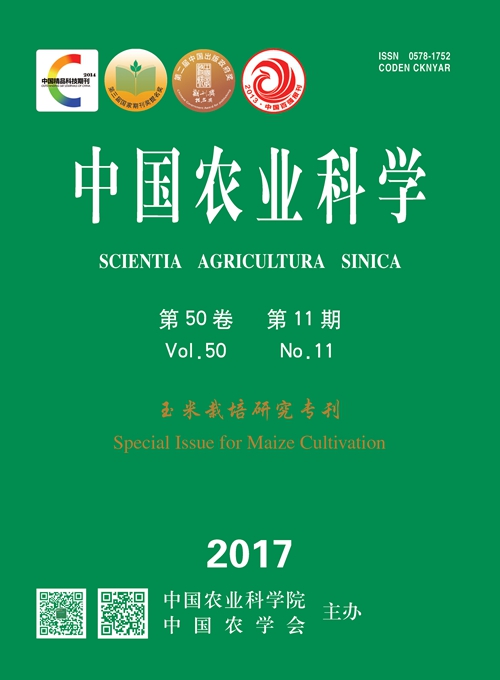-
Improvement Effects of Rotational Tillage Patterns on Soil in the Winter Wheat-Summer Maize Double Cropping Area of Huang-Huai-Hai Region
- YU ShuTing, ZHAO YaLi, WANG YuHong, LIU WeiLing, MENG ZhanYing, MU XinYuan, CHENG SiXian, LI ChaoHai
-
Scientia Agricultura Sinica. 2017, 50(11):
2150-2165.
doi:10.3864/j.issn.0578-1752.2017.11.020
-
 Abstract
(
401 )
Abstract
(
401 )
 HTML
(
6 )
HTML
(
6 )
 PDF (503KB)
(
728
)
PDF (503KB)
(
728
)
 Save
Save
-
References |
Related Articles |
Metrics
【Objective】A long-term practice of applying single soil rotary tillage pattern in this area has caused soil compaction, poor ability in retaining rainwater and providing nutrients. Effects of different rotational tillage patterns, which were pairwise combined with subsoiling (ST), rotary tillage (RT) and deep tillage (DT) with straw mulching, on soil long-term improvement effects were studied in the winter wheat-summer maize double cropping area of Huang-Huai-Hai region.【Method】The experiments of CRT (continuous rotary tillage), CST (continuous subsoiling), CDT (continuous deep tillage), DT/RT (rotary tillage in first year, deep tillage in second year, again deep tillage followed by alternating the next year) and DT/RT/RT (deep tillage in first year, rotary tillage in second year, rotary tillage in third year, again deep tillage followed by alternating the next year) were conducted before sowing winter wheat, and different rotational tillage patterns on the ratios of soil solid-liquid-gaseous, soil organic carbon storage, soil total nitrogen storage, soil enzyme activities, soil respiration, and crop economic benefits were analyzed. 【Result】The results showed that, there were significant effects of rotational tillage, soil depth and tillage year on the ratios of soil solid-liquid-gaseous, soil carbon organic storage, soil total nitrogen storage and soil enzyme activities. Compared with CRT, the CST patterns increased soil organic carbon sequestration, soil total nitrogen storage, soil urease and invetase activities of surface soil, and CDT, DT/RT, DT/RT/RT increased soil organic carbon sequestration, soil total nitrogen storage, soil urease and invetase activities at 10-40 cm soil layer of winter wheat and summer maize. With the increasing cultivation, the R value at 0-40 cm soil layer under the five rotational tillage patterns showed a trend of overall decrease, and the soil organic carbon storage and soil total nitrogen storage showed a trend of overall increase. The effect of DT/RT, DT/RT/RT was more significantly. Compared to pretreatment, the R values under CRT, CST, CDT, DT/RT, DT/RT/RT were significantly decreased by 20.8%, 33.1%, 29.5%, 29.7%, 30.7%, while the soil organic carbon storage significantly increased by 6.4%, 14.5%, 16.0%, 20.6%, 23.8% and the soil total nitrogen storage increased by 3.1%, 11.1%, 11.6%, 13.3%, 15.7%, respectively. There were significant effects of rotational tillage on the soil respiration rate. Compared with CRT, CST, CDT, DT/RT, and DT/RT/RT increased soil respiration rate by 20.7%, 19.3%, 13.7%, and 9.2% during winter wheat season, and increased by 19.1%, 18.1%, 15.2%, and 10.4% during summer maize season, respectively. However, DT/RT, DT/RT/RT declined soil respiration rate by 5.9%, 9.6% during winter wheat season, and declined by 3.3%, 7.3% during summer maize season, respectively, relative to CDT. Compared with DT/RT, the soil respiration rate of DT/RT/RT was declined by 4.1% during winter wheat season and declined by 4.3% during summer maize season. Rotational tillage, tillage year and tillage×year had significant effects on crop yield and economic benefits. Through comprehensive evaluation and analysis of the winter wheat and summer maize annual grain yield and economic benefits of five rotational tillage patterns in six years, DT/RT was the best, but DT/RT/RT had no significant difference relative to DT/RT. Compared with CRT, the average annual yields of 6 years under DT/RT/RT, DT/RT, CDT, CST were increased by 18.9%, 21.4%, 12.9%, 15.7%, and the average economic benefits were increased by 31.9%, 36.2%, 20.3%, 25.4%, respectively.【Conclusion】DT/RT/RT improved good tilth soil structure, increased the distribution of soil organic carbon characteristics, total nitrogen storage and enzyme activities of root zone in the top soil layer, declined farmland carbon emission, improved significantly crop yields and economic benefits. Therefore, DT/RT/RT can be selected as an suitable tillage practice for double-crop system of winter wheat-summer maize in Huang-huai-hai area, followed by DT/RT rotation tillage.









